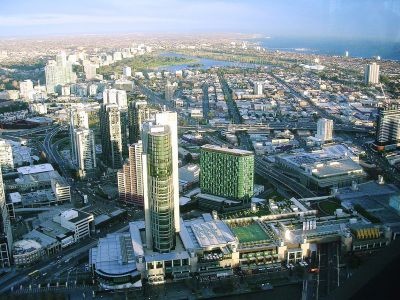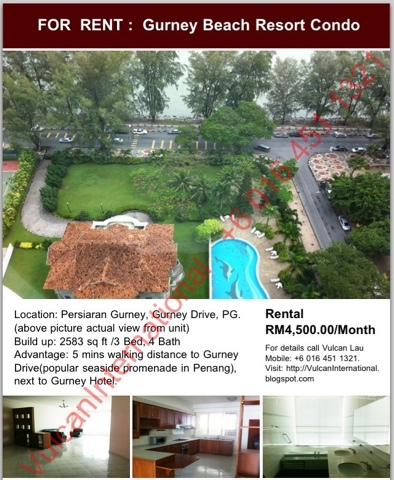Friday March 23, 2012
THE hefty new stamp duty imposed late last year seems to have cooled foreign demand for property here.
The share that non-permanent resident (PR) foreigners have of the private housing sector fell by about 10 percentage points this year compared with November — right before the Dec 8 measures kicked in.
In November, foreigners bought 385 units, including new sales, resales and subsales, for a 16% slice of the entire market, excluding executive condominiums (ECs).
But they bought only 53 units in January and 96 units last month, giving them a market share of about 6.5%, according to analysis of Urban Redevelopment Authority data by consultancy Savills Singapore. In 2010, foreign buyers comprised 12% of the market, rising to a record 17% last year. Sales by PRs have held steady at about 13% for both 2010 and last year.
Experts say the 10% additional buyer’s stamp duty applied to all foreign purchases was the main cause of the steep drop.
The measures would have caused a reaction, making foreigners think twice about whether Singapore was still an attractive investment destination.
Ku Swee Yong, chief executive of International Property Advisor, said the frequent shifts in policy could also have dampened demand.
The slew of policy changes over the past two years may have prompted foreigners to opt to rent before deciding on whether they want to buy, he noted.
Some of his Malaysian clients are considering investing in commercial space or smaller homes with lower overall prices, to completely avoid the duty or pay a smaller fee.
Ku expects foreign demand to be subdued for the rest of this year.
Tan Kok Keong, OrangeTee’s research and consultancy head, also noted that with no major bad news between November and last month, the additional stamp duty was clearly the main cause.
Some experts say the drop might be a temporary lull as foreign buyers take time to get used to the idea of the higher tax.
Alan Cheong, director of research and consultancy at Savills, believes foreign demand will inch up over time.
“Foreign buyers at the moment may baulk at the extra 10% premium, but once they see this as the new norm, they may merely treat the additional buyer’s stamp duty as sort of a ‘cover charge’ for parking their funds in a safe haven,” he added.
OrangeTee’s Tan said foreign buyers could creep back in the second half of the year but they are unlikely to match the figures seen before the measures.
Chinese buyers made up about 28% of all foreign purchases — by PRs and foreigners — last year, bypassing Malaysians, the traditional leaders. Tighter home-buying policies in China, such as restrictions on residents in major cities buying a second or third home, prompted more Chinese to look further afield.
Despite the dip in foreign demand, home sales remained strong in the first two months of the year as Singaporean buyers continued to power the market. Last month, a record 3,138 homes, including ECs, were sold as buyers flocked to mass market projects with affordable, small-sized units. — The Straits Times / Asia News Network
Source reference link: http://thestar.com.my/news/story.asp?file=/2012/3/23/asia/10969572&sec=asia
Back to Main Page: www.VulcanInternational.blogspot.com
THE hefty new stamp duty imposed late last year seems to have cooled foreign demand for property here.
The share that non-permanent resident (PR) foreigners have of the private housing sector fell by about 10 percentage points this year compared with November — right before the Dec 8 measures kicked in.
In November, foreigners bought 385 units, including new sales, resales and subsales, for a 16% slice of the entire market, excluding executive condominiums (ECs).
But they bought only 53 units in January and 96 units last month, giving them a market share of about 6.5%, according to analysis of Urban Redevelopment Authority data by consultancy Savills Singapore. In 2010, foreign buyers comprised 12% of the market, rising to a record 17% last year. Sales by PRs have held steady at about 13% for both 2010 and last year.
Experts say the 10% additional buyer’s stamp duty applied to all foreign purchases was the main cause of the steep drop.
The measures would have caused a reaction, making foreigners think twice about whether Singapore was still an attractive investment destination.
Ku Swee Yong, chief executive of International Property Advisor, said the frequent shifts in policy could also have dampened demand.
The slew of policy changes over the past two years may have prompted foreigners to opt to rent before deciding on whether they want to buy, he noted.
Some of his Malaysian clients are considering investing in commercial space or smaller homes with lower overall prices, to completely avoid the duty or pay a smaller fee.
Ku expects foreign demand to be subdued for the rest of this year.
Tan Kok Keong, OrangeTee’s research and consultancy head, also noted that with no major bad news between November and last month, the additional stamp duty was clearly the main cause.
Some experts say the drop might be a temporary lull as foreign buyers take time to get used to the idea of the higher tax.
Alan Cheong, director of research and consultancy at Savills, believes foreign demand will inch up over time.
“Foreign buyers at the moment may baulk at the extra 10% premium, but once they see this as the new norm, they may merely treat the additional buyer’s stamp duty as sort of a ‘cover charge’ for parking their funds in a safe haven,” he added.
OrangeTee’s Tan said foreign buyers could creep back in the second half of the year but they are unlikely to match the figures seen before the measures.
Chinese buyers made up about 28% of all foreign purchases — by PRs and foreigners — last year, bypassing Malaysians, the traditional leaders. Tighter home-buying policies in China, such as restrictions on residents in major cities buying a second or third home, prompted more Chinese to look further afield.
Despite the dip in foreign demand, home sales remained strong in the first two months of the year as Singaporean buyers continued to power the market. Last month, a record 3,138 homes, including ECs, were sold as buyers flocked to mass market projects with affordable, small-sized units. — The Straits Times / Asia News Network
Source reference link: http://thestar.com.my/news/story.asp?file=/2012/3/23/asia/10969572&sec=asia
Back to Main Page: www.VulcanInternational.blogspot.com




